News feed
What Would a Once-in-a-Millenium Flood Look Like in Budapest?
2024. 10. 02.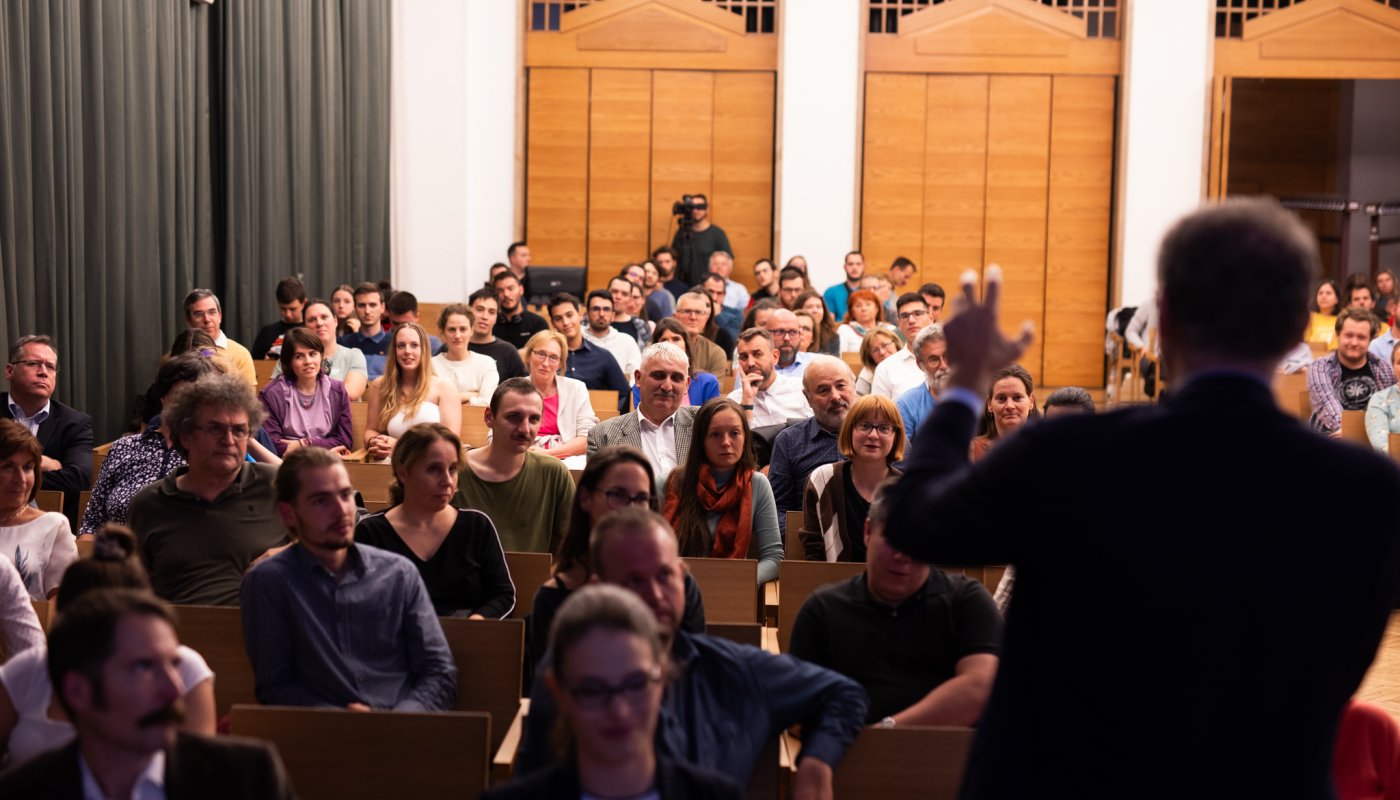
The audience of the first "Future Planner.BME" lecture received answers to this and many other questions from the lecturers of the Faculty of Civil Engineering at BME.
"Community science is about things that affect all of our lives, and it must be discussed in a way that everyone can understand," began János Levendovszky, Vice-Rector for Research and Innovation at BME, in his opening speech of the Future Planner.BME lecture series. He then added that collective action is even more crucial, a statement emphasised by the topic of the lecture. In fact, the Faculty of Civil Engineering had chosen the title "Lifegiving Waters: How Do We Shape the Fate of Our Rivers?" for the lecture, and, at the time of the event, the decade’s most significant flood in Hungary had just passed its peak.
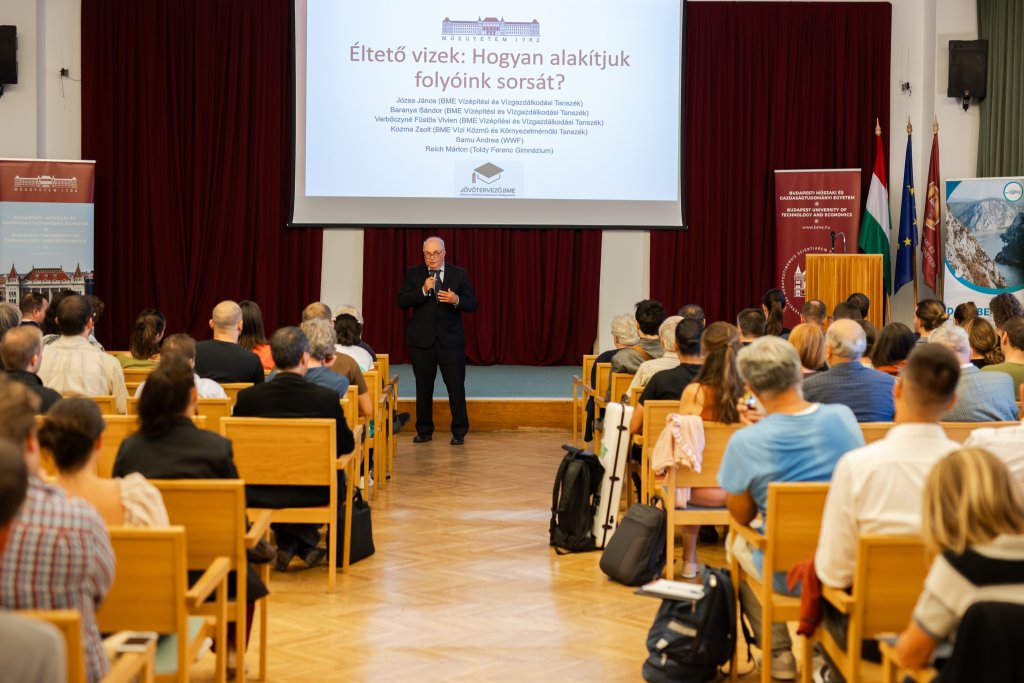
The first speaker, János Józsa, former rector of BME, outlined the work undertaken at the Department of Hydraulic and Water Resources Engineering alongside its teaching activities: research on river restoration, hydrological forecasting, analysis on fluid mechanics, and the development of new investigative methods. To illustrate the significance of this work, he presented a simulation map showing what would happen in Budapest during a Danube flood of the magnitude that occurs roughly once every 1,000 years. (As expected, such a volume of water could not be contained within the current flood protection structures.)

Associate Professor Sándor Baranya then outlined the most pressing global and domestic challenges in river management. These issues include river warming and the accelerating water cycle due to climate change, leading to more frequent extreme water conditions. At this point, the audience could glance out of the windows of the Ceremony Hall at the still unusually high Danube, recalling the images of the nearly dried-up Tisza River. He also discussed the imbalance in sediment budgets caused by human intervention in riverbeds, resulting in riverbed deepening.
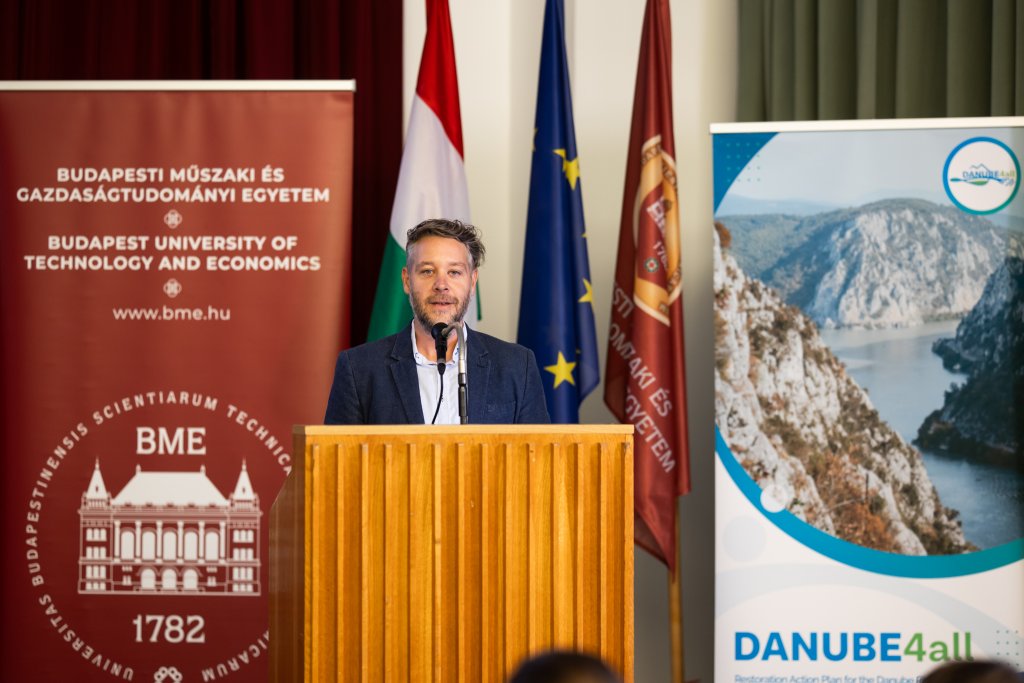
All these phenomena can be observed in Hungary, including the increasingly incised riverbeds that hinder navigation and lower groundwater levels, which in turn create semi-arid areas. Experts strive to combat these challenges through programmes such as Danube4all, which aims to restore the Danube and its ecosystem.
Vivien Verbőczyné Füstös, a research assistant at the Department of Hydraulic and Water Resources Engineering, delivered a presentation on eco-hydraulic engineering, focusing on river habitats. She pointed out that, ideally, the fundamentally technical-technological approach of hydraulic engineers should be complemented by an ecological perspective. Hence, water management can be most effective through the collaboration of engineers and biologists.
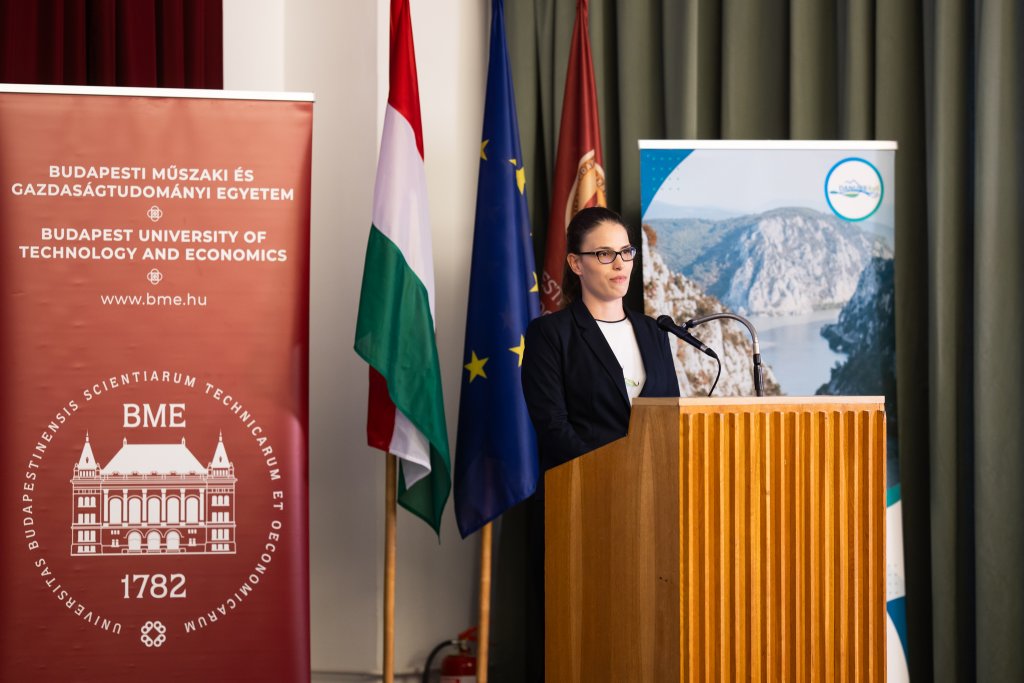
Zsolt Kozma, associate professor at the Department of Sanitary and Environmental Engineering, discussed the increasingly common public discourse about the challenge of preserving surplus water for periods of drought in his lecture on the possibility of sustainable water retention. Highlighting the issue's significance, he mentioned that the 2022 drought reduced Hungary's GDP by 1.5 per cent. He also spoke about the Tisza River valley, which underwent significant transformation in the 19th century, and its deep floodplain areas, which could facilitate landscape-focused water management.

Andrea Samu, an expert from the World Wide Fund for Nature (WWF), further developed this idea in her presentation, titled “Conservationists and Hydraulic Engineers: Rowing in the Same Boat." She shared some shocking statistics: 37 Hungarian rivers are drying up, 1,000 lakes in the Homokhátság region between the Danube and Tisza rivers have disappeared over the last century, and the Danube has lost 68 per cent of its floodplain along its entire length. It might have been news to many that the current wave of species extinction primarily affects freshwater species. To halt this trend, human activities must be harmonised with natural processes.

Finally, Márton Reich, a student at Toldy Ferenc Secondary School and last year’s first-place winner in BME's secondary school TDK, took the floor. Displaying confidence that could put seasoned presenters to shame, he showcased the opportunities artificial intelligence offers to hydraulic engineers, including his own fish identification software that provides vital data to experts on the wildlife of a given river section.
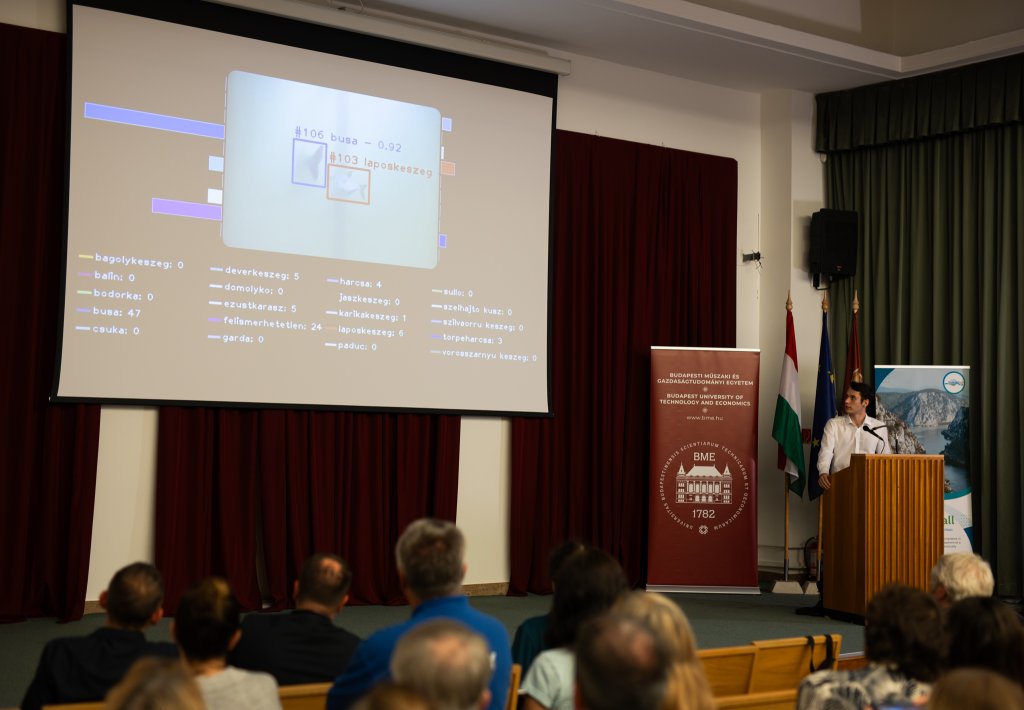
Following these speeches, Associate Professor Sándor Baranya's closing remarks seemed fitting: the key takeaways were the importance of education, interdisciplinary research, setting priorities in water management, and collaborative thinking with stakeholders. There was also time for the audience's questions – including whether a flood exceeding 9 metres in Budapest is conceivable in the near future (unfortunately, it is) – and for János Józsa to encourage the audience to applaud the efforts of the István Láng, Director General of the General Directorate of Water Management, present in the audience, and his colleagues over the past few days.
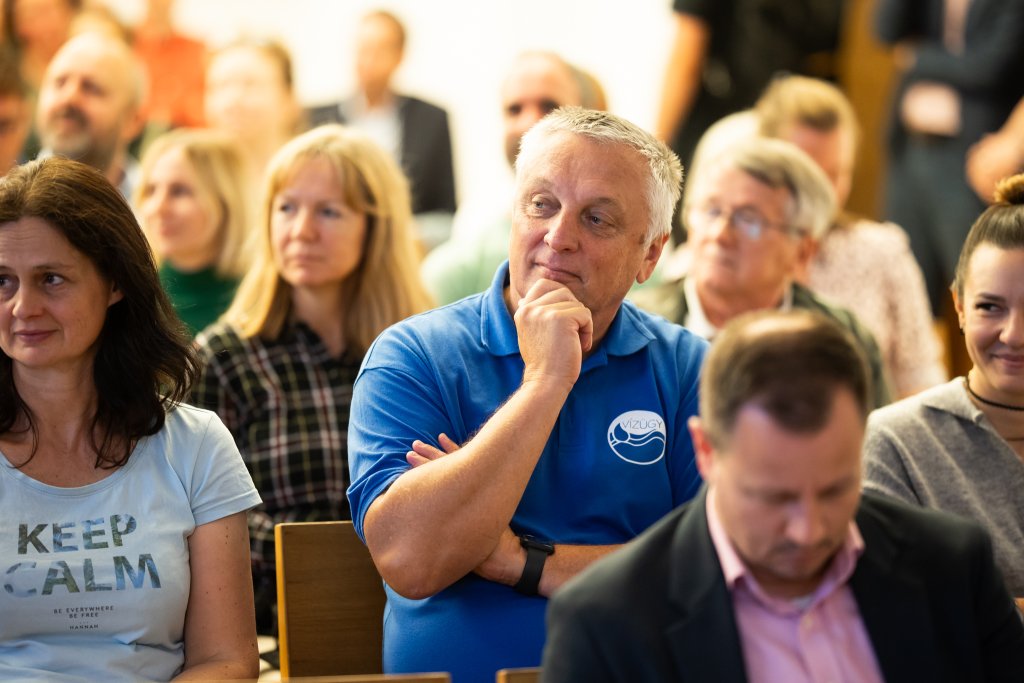
The presentations can all be viewed here (in Hungarian), and the full video recording of the event can be found below.
gp
